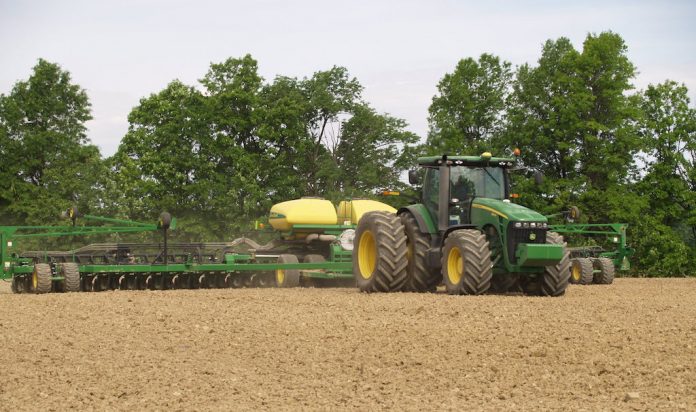The rain fell most of the night again. The weather report got better, since if we could get through the Monday night weather, May 21, we had four days forecast without rain.
We did not get through.
Farmers in northeast Ohio have a mixed bag of planting progress to report. One Portage County producer told me a week ago that he was done planting, and he was amazed that the crops were as far along as they were.
He commented on the warm May so far. On the other hand, a Trumbull County farmer told me a couple of days later that his area was really wet, and he did not think he would get going again before we got more rain.
Planting progress
He was only a third planted, while others a little farther north were nearly done. There is no doubt that the crops that have been planted are in great condition. The temperatures are warm, and regular slow-soaking rains have provided perfect moisture conditions.
The crops that are not planted are the problem right now. According to USDA, however, we are making great progress, with the U.S. exactly on pace at 81 percent planted on corn, and the Ohio farmers at 71 percent, which is actually ahead of the 66 percent five-year average.
Ohio farmers planted 16 percent of the corn last week. Both Ohio and the U.S. as a whole are ahead of average for the soybean planting. The nation is at 56 percent, against a 44 percent average.
Ohio has 50 percent of the crop in the ground, with 37 percent being the average. Ohio farmers planted 19 percent of the beans last week.
Tractors were running Monday afternoon, May 21, but some of the ground looked a little squishy.
Heavy rains
As much as two inches of rain was forecast, so some were trying to tiptoe in a few acres. The most exciting news Monday (besides the fact that my grandson Nolan Boothe is in the VA state finals for an individual baseball competition) is that we made a new contract high for December corn futures, at 4.243⁄4.
This is significant because it comes while we are on pace for planting, so there is no delayed planting component, and because the seasonal high normally comes in June. Some are saying the high could be early this year.
This means that either the farmer should be selling now, or that he should be putting in targets to make sure he gets a large part of the crop sold in the next month. Soybean markets have been volatile as traders have followed political posturing with the Chinese.
We threaten tariffs, they shut off soybeans.
Trade deal
Over the weekend we had news of a potential trade deal with China, and markets were quickly 12 cents higher. The November contract finished up above 25 cents. We have a way to go to get back to contract highs, though.
This Tuesday morning, May 22, we are trading November futures at 10.363⁄4. That is a good bounce from the 10.02 we saw last week, but well off the 10.60-3⁄4 of April 2.
April 30 we traded close to the high, at 10.57-3⁄4, but quickly slid lower. The American wheat crop has been in harvest in the Southern Plains for most of the month. The harvest normally starts in Dalhart, Texas, the first week of May.
Our soft red winter crop here will see harvest in late June, and we have seen recent rallies that are getting us back to the contract highs. We touched $5.313⁄4 July futures in early March, then 5.21⁄2 in early May.
Monday we got back to 5.25-1⁄2, and are currently trading 5.20-3⁄4, up over 13 cents on the day so far.












